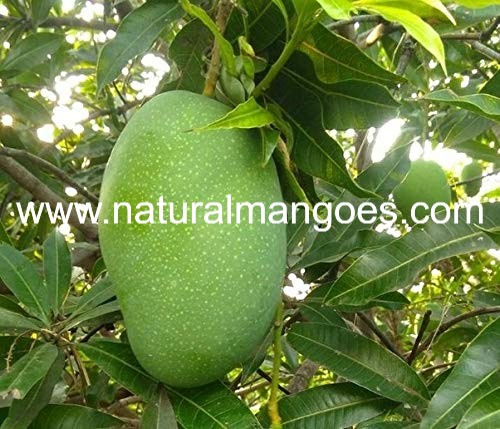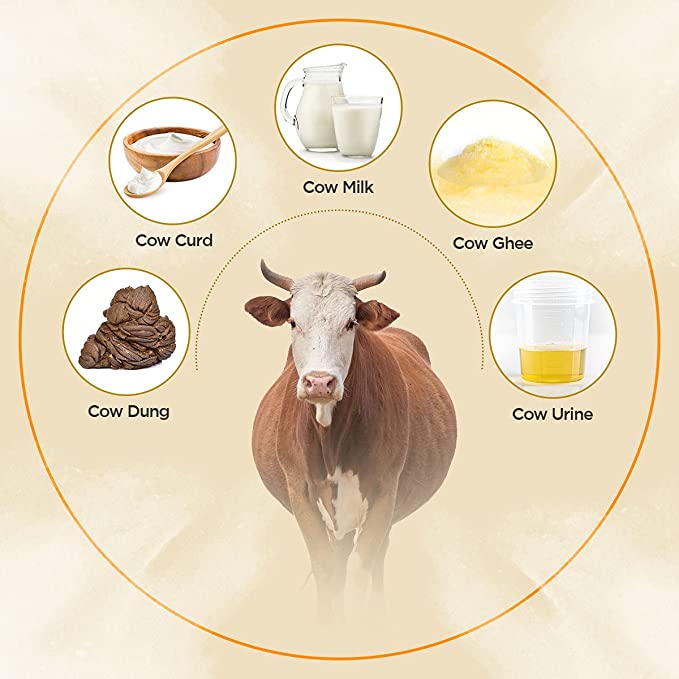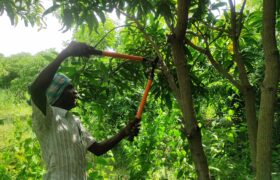How to create new organic mango farm and best planting methods

How to create new organic mango farm and best planting methods
Organic farming methods are becoming more and more popular – they promote the health of the land, provide a high-quality product, and are better for those who consume them. If you give this trend a try, read this article to find out how to create an organic mango farm with qualified organic farmers and what different growing techniques you should use to create healthy plants.
What is an organic mango farm?
If you are looking to create a new organic mango farm, one of the first things you will want to do is ensure that the soil is healthy and ready for planting. You will also want to plant mango trees in clusters so that they can share water and nutrients from the surrounding soil. Organic mango farms are safe and environmentally friendly businesses. They use organic methods to grow, which means they do not use pesticides or antibiotics to produce their crops. Mango is considered a “discovery crop” because it grows easily in tropical and subtropical climate conditions. This makes it ideal for farming in regions that do not have a lot of experience with fresh produce and agriculture.
Mango trees and soil
Mango trees grow on the ground and take around 3-6 years to reach maturity. Once they reach maturity, a new tree can be planted at the same time as the old one dies. This can create a more sustainable system for mango farming and better maintain the soil. There are many ways that farmers can plant mango trees, but the best way starts with finding a tree. When mango trees are planted in soil, they require many nutrients like phosphorus and nitrogen. To ensure that the trees get a steady supply of these nutrients, it is important to give them a proper fertilizer. Mango trees are also susceptible to pests like mites, ants and termites. When planting a new mango tree, it is important to use organic manure. This will make sure that the trees get all the nutrients they need to grow strong and healthy. It is also important to fertilize the area where you are planting the tree with compost, which will help the roots of your new tree flourish and find nutrients easier.
Fruit trees vs. fruit bearing shrubs
To grow and sustain an organic farm, one must have a diverse planting that yields a high yield. This can be achieved by choosing the best fruit trees and shrubs. Fruit trees should be planted in full sunlight. Fruit bearing shrubs may require more shade or sun exposure to remain productive. Fruit trees are one of the most common types of plants that people plant in their yards and gardens today. Many fruit trees produce fruit full-time, and some trees last for centuries. Fruit bearing shrubs, on the other hand, can take a few years to produce fruit but have the potential to have a much longer lifespan. Fruit trees need to be pruned, fertilized, and watered in order to produce the fruit. Fruit bearing shrubs do not need these types of treatments and will produce fruit on their own. If a garden is small enough, it might be better to plant the bushes instead of the trees.
Mangoes, fertilizers, and pesticides
Organic growing is an extremely important part of farming, but it can be challenging at times. It requires a lot of time and energy, which can make it difficult to create a new farm. There are many factors that need to be taken into consideration before starting a farm including location, whether the farmland is protected from other houses, and the best planting methods for the region. Some tips for successful mango farming include using compost and fertilizers made from organic materials and choosing natural pesticides or avoiding them altogether. The best mango planting methods include using organic fertilizers and pesticides. Mangoes should be planted before monsoon season i.e., during July – Sep month so that trees don’t compete for nutrients and water. Organic fertilizer is a mixture of compost, manure, and bone meal. A new organic mango farm is necessary for the health of the earth. Mangoes are grown on small farms, but if no one plants anything and the land goes unused it can lead to desertification. To plant a new mango farm, you will need to know what type of soil is best for growing mangos, how many trees will be needed, and where they should be planted. You’ll also need compost that has been composted with certain materials such as leaves or manure. Lastly, you’ll need fertilizers like potassium phosphate that help the growth of trees and other crops.
Mangoes are a delicious fruit that grow well in most climates. Still, even the farmers who sell them on the street have to worry about the dangers of pesticides and fertilizers. These toxic products can pollute land, water, and air and cause humans, animals, and other living things to suffer from disease. Organic mango farming practices are based on natural methods that will help prevent these possible side effects of conventional farming. Mangoes are the most widely eaten fruit in the world, but they aren’t as common as they should be. The reason is that they can be difficult to grow organically due to their reproductive cycles. With an organic farm, it’s possible to create a continuous harvest of mangoes year-round. This also means that you’ll need fewer fertilizers and pesticides for your farm over time, saving you money and helping your plants!
How to create a new organic mango farm
The best way to create a new organic mango farm is to start small. As with any other farming venture, starting small is the key to success. Learn what you can and what you like before going all out. The first step to growing your own organic mango farm is to find a location that fits the needs for your farm. Next, you will need to choose a species of mango tree and research the suitable planting methods for your area. Finally, design an attractive fence for your farm and start planting!
For organic farmers, the struggle to find land sometimes makes it difficult to create a new farm. However, there are other options for creating new farms and one of them is by planting mangoes in containerized greenhouses. The key steps are getting the right type of soil and choosing the correct planting method. The best planting methods include building a raised bed, removing the tree from the ground, and placing it in a spot that’s easy to water. This can be done by constructing a 4-6-inch-deep pile of coarse sand around the tree with stones at the base. There are many strategies for creating a new organic farm. The most important strategy is to plant a wide variety of mango varieties in a geographic region that has never been farmed before because they did not exist. This will help establish the new farm and the mango industry in an area that was previously uninhabited. Before you choose where to plant your new mango farm decide what the main purpose is, if you want to sell the fruit or if you just want to grow it for your own consumption. Planting in a location with more sun will also result in larger mangoes.
Step by step instructions
Creating an organic farm is not easy and takes time and effort. However, if you follow these steps, you will be on your way to creating a successful farm. One of the first steps in creating a new organic mango farm, is choosing the best planting methods. This includes how to choose the right soil and climate for your farm, what kind of plants should be planted, and where to plant them. Once you’ve chosen these things, next you’ll need to care for your new farm. This includes watering it regularly, fertilizing it with compost tea, and monitoring pests. Finally, once your farm is fully established you can start looking into harvesting and marketing your mangoes! Mango farming is a lot of work and patience. There are many different planting methods that can be used to grow the best mango plant possible. When it comes to planting mango trees, there are many ways you can go about it. To start a new mango farm, it’s important to know the best methods and materials to create your garden. This guide is a step-by-step list of everything you’ll need to begin the process. Organic farms are one of the best ways to ensure that your produce is safe and has been grown in a pesticide-free environment. It is also a great way to meet some new people who share similar interests and want to make the world a better place. Organic mango farming begins with planting a sapling. A single mango tree will produce about four fruits per year, each weighing about 0.5-1 kilogram. The first step is to buy the saplings from a reputable nursery, usually your local fruit shop. Plant the saplings in a well-drained soil mixture of sand and compost around 100cm apart. For the next two years, water regularly and prune when necessary to maintain the size of the plant’s canopy as it grows.
Step 1: Purchase a mango sapling.
Step 2: Use your shovel to dig out the hole 3-5 feet deep.
Step 3: Put the shovel in the hole and turn it upside down so that the dirt falls into the hole, and you can fill moat around it with water. Make sure there is enough water to fill this moat as well.
Step 4: Fill up half of this moat with soil from your compost pile to form a base for your tree, then add some sand within reach of the roots of your This article gives you step by step instructions on how to create and maintain a new organic mango farm. It also includes a list of the best planting methods so that you can optimize your profits. It’s simple to grow your own organic mango farm. You just need space, sunlight, and healthy soil. The ideal size for an organic mango farm is approximately half an acre. To start the process of getting ready for planting, you’ll need to prepare your soil with a pH level that ranges between 6-6.5 and is rich in nutrients; this takes time, and most people think it best to leave the preparation work to professionals until they are sure they have everything they need before they begin. The next step is deciding which variety of fruit tree to plant, since there are different kinds of mango trees available on the market. If you are not sure which variety of tree will be best for your climate, talk with other farmers
Conclusion
The best option for growing a new mango farm is to plant on the slope of a hill. This will ensure plenty of sunlight and that the water from rain run offs downhill instead of seeping back up into the soil. The organic fruit trees should be planted in good soil that has been layered with compost and manure to provide nutrients. By reading this article, you should be able to create a new organic farm and plant mango trees using the best planting methods.
For more information, please visit our website:
https://www.naturalmangoes.com
http://www.farmfreshmangoes.in










Great article, just what I was looking for.